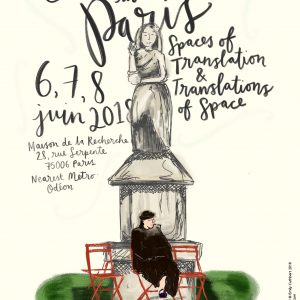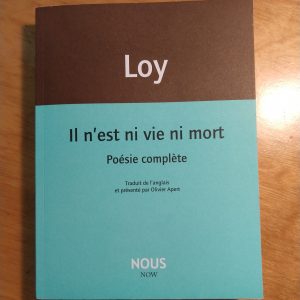June 2018, Susan Rosenbaum

I attended the “Elizabeth Bishop in Paris” conference in June 2018 (#EBParis), and arrived a couple of days early to find and photograph some of the places where Loy lived, worked, and socialized for the chapter on Mina Loy and Parisian Surrealism for mina-loy.com. In the midst of wonderful papers on Bishop, however, my mind kept returning to Mina Loy… or rather, thinking about Bishop in Paris made me think differently about Loy in Paris. And a key point of connection was Gertrude Stein. My paper explored Bishop’s navigation of literary Paris during her two trips there (July 1935-February 1936, June-December 1937). Bishop was very interested in Stein at this time and attended her lecture on “entity versus identity” in Paris; prior to traveling to Paris, Bishop had heard Stein deliver two lectures on her Fall 1934 American tour: “Pictures” at the Colony Club in New York and “Portraits I have Written and What I think of Repetition, Whether it Exists or No” at Vassar College. Bishop wrote insightfully about Stein’s experimental style, as did Marianne Moore and Mina Loy; in fact, all three poets defined the importance of “experiment” (and used that word) in the context of Stein’s writing. Loy’s admiration for Stein and her writing is well-known: Loy called Stein the “Curie / of the laboratory / of vocabulary” in a poem that opened her two-part essay on Stein’s work in TransAtlantic Review (Sept and Oct 1924) and delivered a paper on Stein at Natalie Barney’s salon in 1927, later published by Barney in Aventures de l’Esprit (1929).
Since Stein was a model of experiment for both Bishop and Loy, I wondered whether Loy and Bishop had crossed paths in Paris during Bishop’s 1935-6 trip. It’s certainly possible, although unlikely, as neither writer mentions this connection. In fact, even as Bishop explored key locations of avant-garde and expatriate Paris also frequented by Loy — Sylvia Beach’s Shakespeare & Co. Bookshop, André Breton’s art gallery, Les Deux Magots, the Café de Flore — she confessed to being too shy to accept social invitations (including tea at Gertrude Stein’s), or to talk with the writers and artists she encountered. While Loy remained on the margins of avant-garde movements, she was an active presence in expatriate and avant-garde circles; Bishop remained truly outside these circles even as she studied and absorbed their literary and artistic experiments. Bishop and Loy demonstrate quite different negotiations of the “en dehors garde,” and this may help to explain why Bishop is usually left out of histories of experimental writing. Through the Bishop conference I learned that Dr. Amy Waite is working on a book about Loy and Bishop, Our Earthly Trust: Mina Loy, Elizabeth Bishop and the Posthuman, in which she explores how their poetry encourages and theorizes radical encounters between the human and non-human.
The temporal overlap of Bishop and Loy in Paris with no evidence of their meeting reminded me of the many unconfirmed yet theoretically possible connections between Mina Loy and the writers, artists, and musicians who visited Paris in the 1920s and early 30s. My students working on Loy’s social and artistic connections in Paris wondered about these unconfirmed, yet possible, connections: for instance, did Loy and Langston Hughes cross paths while both were in Paris in 1923/24? Archival research may turn up more information about Loy’s network in Paris, but also telling are the connections that were not recorded or that didn’t occur, a kind of shadow-map shaped by geographies of race, class, social affiliation, chance. How might our literary histories (and network visualizations) account for these shadow-maps?

I tracked down the building that housed Loy’s lamp shop at 52 Rue de Colisėe, a street that connects the Avenue des Champs Elysées with Rue de Faubourg St Honoré on the right bank. Loy created original lamp designs for the shop, oversaw their production, and managed the shop from 1926-29 (she bought it from Peggy Guggenheim with the help of Edgar Levy in 1928 and sold it in March 1930). The location is currently a restaurant serving a variety of Asian dishes.
 I was excited to learn that a number of French scholars and students are writing about Mina Loy, and came across Olivier Apert’s recent translation of Loy’s poems (Nous, 2017); Apert has also translated Loy’s “Manifeste Feministe & Écrits Modernistes” (2014).
I was excited to learn that a number of French scholars and students are writing about Mina Loy, and came across Olivier Apert’s recent translation of Loy’s poems (Nous, 2017); Apert has also translated Loy’s “Manifeste Feministe & Écrits Modernistes” (2014).